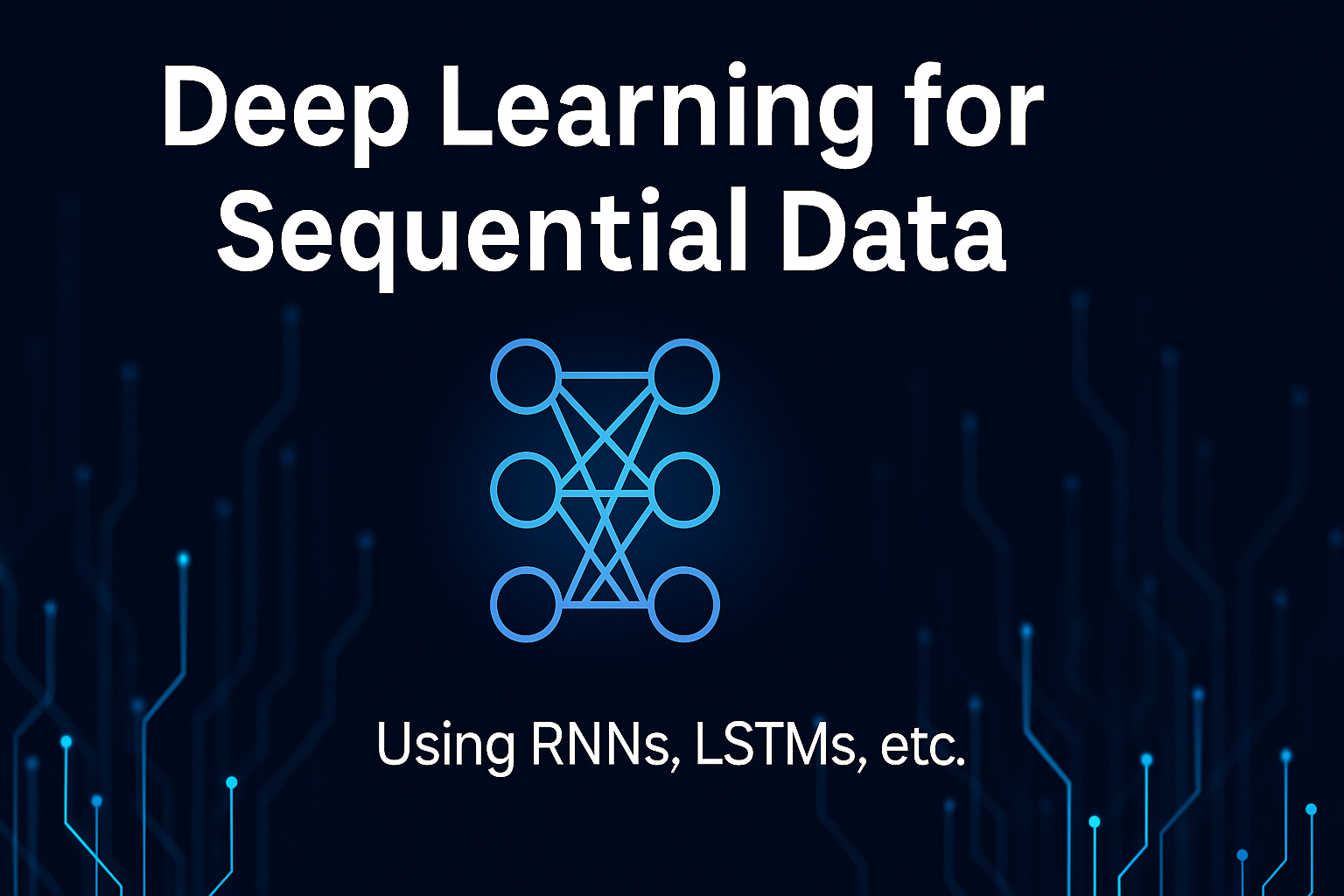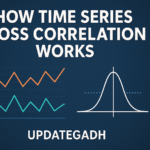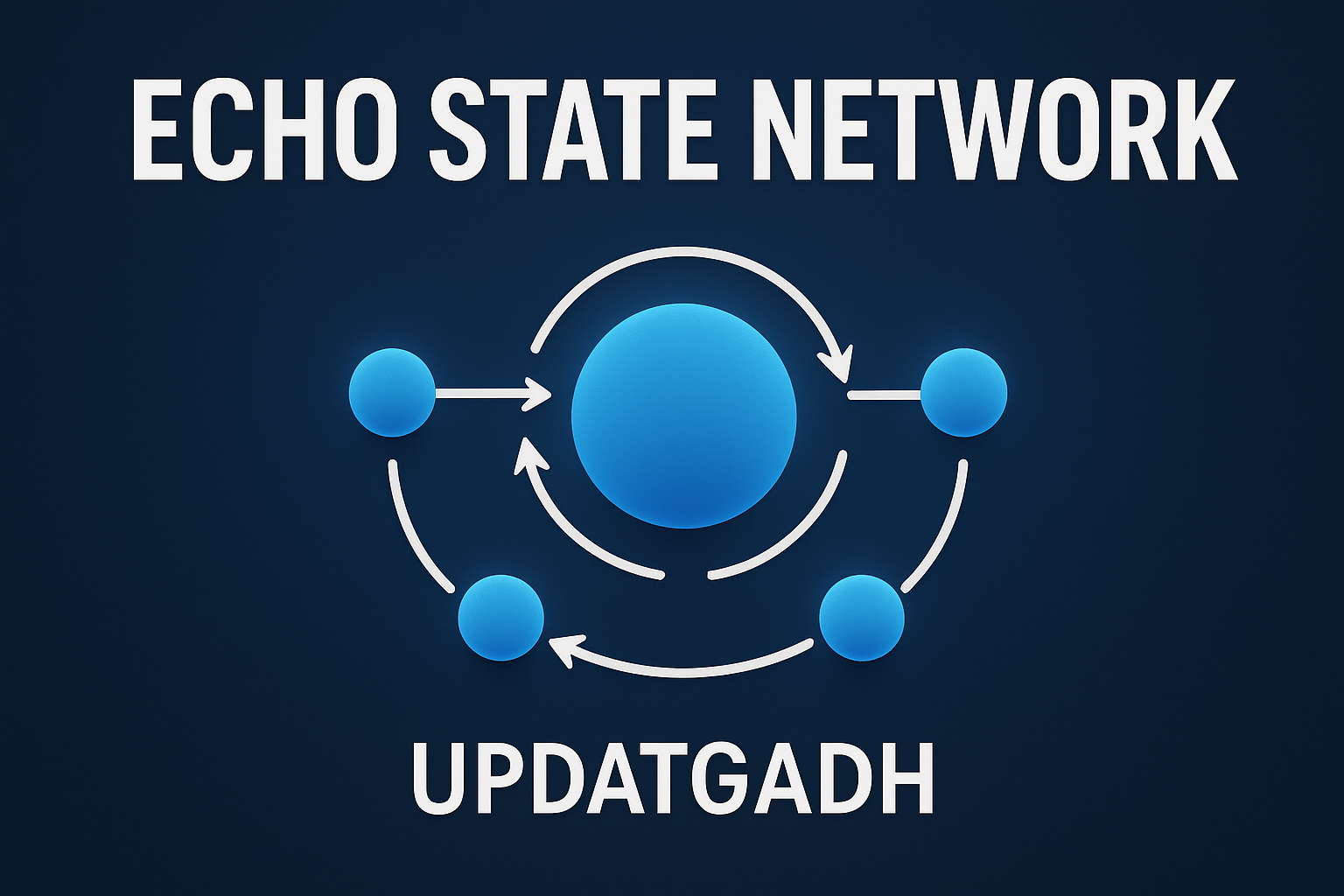

Deep Learning for Sequential Data
Deep Learning for Sequential Data
In recent years, deep learning has emerged as a transformative force across numerous industries. One of its most impactful applications lies in the analysis and modeling of sequential data—data where the order of elements is fundamental. From natural language processing and speech recognition to time series forecasting and video analysis, the ability of deep learning to model complex, time-dependent patterns has opened new possibilities across domains.
This blog explores how deep learning is uniquely positioned to process sequential data, covering essential concepts, key architectures, training strategies, and evaluation metrics.
Machine Learning Tutorial:-Click Here
Data Science Tutorial:-Click Here
Complete Advance AI topics:-CLICK HERE
DBMS Tutorial:-CLICK HERE
Understanding Sequential Data
Sequential data refers to data points that are inherently ordered and often exhibit dependencies between elements. Unlike traditional tabular data, where rows may be independent, in sequential data, the position and relationship between elements are crucial for meaningful interpretation.
Common Examples of Sequential Data
- Time Series Data: Weather patterns over time, sensor data, or stock prices.
- Text Data: Sentences and paragraphs where word order affects meaning.
- Speech & Audio: Sequences of audio signals that form spoken words or music.
- Video Frames: Continuous frames that together represent movement and activity.
Key Characteristics
- Temporal Dependency: Future values depend on previous values.
- Variable Length: Sequences may vary in length (e.g., sentences of different word counts).
- Contextual Correlation: Elements are often contextually linked (e.g., words in a sentence or frames in a video).
Challenges in Handling Sequential Data
- Capturing Long-Term Dependencies: Traditional models struggle to retain context over long sequences.
- Handling Variable Length: Requires preprocessing techniques like padding or truncation.
- Data Sparsity: Some sequences contain long gaps or missing values.
- Computational Load: Long sequences and complex models increase memory and processing demands.
Deep Learning Architectures for Sequential Data
Deep learning models have evolved to effectively capture the unique structure of sequential data. Let’s look at some of the most powerful architectures:
1. Recurrent Neural Networks (RNNs)
Overview: RNNs use hidden states to transport information across time steps, preserving memory.
Strengths:
- Suitable for variable-length sequences
- Retains past information to influence current predictions
Limitations:
- Long-term dependency issues brought on by vanishing/exploding slopes
- Training can be slow and unstable
Applications: Sentiment analysis, language modelling, and simple time series forecasting
2. Long Short-Term Memory Networks (LSTMs)
Overview: LSTMs address RNN limitations with memory cells and gates that control information flow.
Strengths:
- Handles long-range dependencies
- Mitigates gradient-related issues
Applications: Machine translation, speech-to-text, and handwriting recognition
3. Gated Recurrent Units (GRUs)
Overview: A lighter alternative to LSTMs, GRUs simplify the architecture with fewer gates.
Strengths:
- Faster training with comparable performance to LSTMs
- Less computational overhead
Applications: Chatbots, financial forecasting, and video frame prediction
4. Attention Mechanisms
Overview: Attention allows models to focus on relevant parts of a sequence during predictions.
Strengths:
- Captures contextual relationships more effectively
- Supports parallel computation
Applications: Text summarization, image captioning, and advanced translation systems
5. Transformers
Overview: Transformers process entire sequences simultaneously using self-attention mechanisms.
Strengths:
- Efficient with long-range dependencies
- Highly parallelizable and scalable
- Foundation for state-of-the-art models like BERT and GPT
Applications: Document classification, generative text modeling, recommender systems
Training Techniques for Sequential Models
Training deep learning models on sequential data introduces unique challenges. Here are effective methods to optimize training:
1. Sequence Padding
Adds tokens to shorter sequences to align batch sizes. Combined with masking to prevent padding from influencing results.
2. Teacher Forcing
Uses actual outputs from the training dataset as inputs for the next step during training, improving convergence speed and stability.
3. Gradient Clipping
Restrains excessively large gradients during backpropagation to stabilize training.
4. Truncated Backpropagation Through Time (TBPTT)
Limits the number of time steps over which gradients are calculated, reducing memory usage and training time.
5. Early Stopping
Stops training once the model’s validation performance stops improving, helping prevent overfitting.
6. Data Augmentation
Expands training data with variations (e.g., text synonym replacement, time series noise injection) to improve generalization.
7. Batch Normalization
Normalizes activations within batches to accelerate and stabilize training.
Evaluation Metrics for Sequential Models
Proper evaluation requires domain-specific metrics that reflect sequence-related performance:
NLP Metrics
- BLEU Score: Measures overlap in translated text against reference translations.
- ROUGE Score: Evaluates summary quality via recall of overlapping phrases.
- Perplexity: Indicates how well a model predicts a sequence.
Time Series Metrics
- Mean Absolute Error (MAE): Average magnitude of prediction errors.
- Root Mean Square Error (RMSE): Penalizes larger errors more than MAE.
- Mean Absolute Percentage Error (MAPE): Expresses errors as a percentage, enhancing interpretability.
Complete Python Course with Advance topics:-Click Here
SQL Tutorial :–Click Here
Download New Real Time Projects :–Click here
Conclusion
Deep learning has fundamentally reshaped how sequential data is processed and understood. With architectures like RNNs, LSTMs, GRUs, Attention Mechanisms, and Transformers, models can now capture complex temporal patterns that were once too difficult for traditional techniques.
Coupled with smart training techniques and rigorous evaluation, deep learning continues to revolutionize applications across industries—from healthcare and finance to language understanding and video analysis. As the field advances, its impact on sequential data processing will only grow, fueling innovations that drive smarter, more responsive systems.
Stay tuned to UpdateGadh for more in-depth articles on AI, machine learning, and cutting-edge technologies.
sequential data examples
what is sequential data in rnn
which model is most effective in understanding sequential data
which ai model is known for its ability to process sequential data like text
sequence models examples
non sequential data
machine learning for sequential data: a review
sequential neural network
deep learning for sequential data example
deep learning for sequential data pdf
deep learning for sequential data python










Post Comment